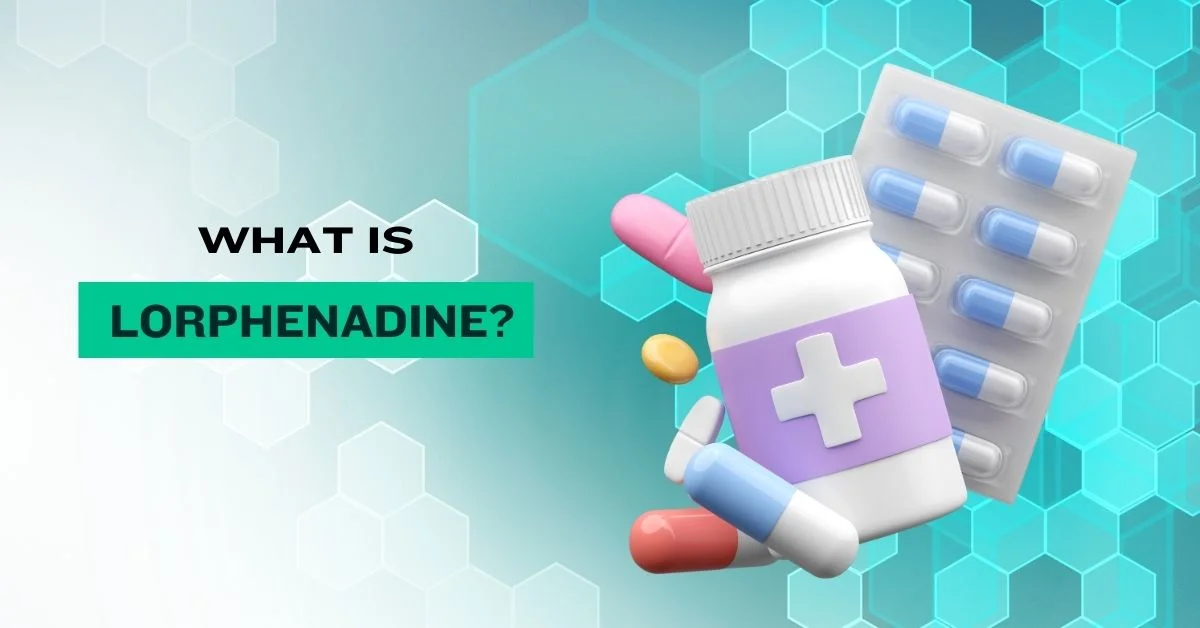Lorphenadine is a medication used primarily for its antihistamine properties. It is commonly prescribed to manage symptoms associated with allergic conditions such as hay fever and chronic urticaria (hives). In this comprehensive guide, we will explore Lorphenadine’s mechanism of action, uses, dosage guidelines, side effects, and considerations.
What is Lorphenadine?
Lorphenadine is an antihistamine belonging to the second generation of antihistamines. Unlike first-generation antihistamines, it is less likely to cause sedation and drowsiness. It is designed to block histamine, a substance in the body that is responsible for allergic symptoms.
Mechanism of Action
Histamine is a chemical released during allergic reactions that binds to H1 receptors in the body, leading to symptoms such as itching, swelling, and mucus production. Lorphenadine works by selectively blocking these H1 receptors, thereby reducing or preventing the symptoms of allergies.
Uses
Lorphenadine is prescribed for the following conditions:
- Allergic Rhinitis: Commonly known as hay fever, it involves symptoms such as sneezing, runny nose, and itchy eyes.
- Chronic Urticaria: This condition is characterized by hives and itching.
- Other Allergic Reactions: Lorphenadine may also be used to alleviate symptoms of other allergic reactions.
Dosage Guidelines
The dosage of Lorphenadine can vary based on the individual’s age, the severity of the condition, and other factors. Generally, the standard doses are:
- Adults and Children Over 12: 10 mg once daily.
- Children Aged 6 to 12: 5 mg once or twice daily.
- Children Under 6: The dosage for this age group is determined by a healthcare provider based on weight and clinical condition.
Lorphenadine should be taken with or without food. It is important to follow the dosing instructions provided by your healthcare provider to avoid overuse or underuse of the medication.
Side Effects
While Lorphenadine is generally well-tolerated, some individuals may experience side effects. Common side effects include:
- Dry mouth
- Headache
- Fatigue
- Dizziness
Rare but serious side effects might include:
- Severe allergic reactions
- Rapid heartbeat or palpitations
- Severe dizziness or fainting
If you experience any severe side effects, it is important to seek medical attention promptly.
Drug Interactions and Precautions
Lorphenadine can interact with other medications, which may affect its efficacy or increase the risk of side effects. Notable interactions include:
- Antifungal Medications: Certain antifungals can increase the levels of Lorphenadine in the blood.
- Antibiotics: Some antibiotics can also interact with Lorphenadine.
- Alcohol: While Lorphenadine is less likely to cause drowsiness, combining it with alcohol may still lead to increased sedation.
Patients with severe liver or kidney conditions should use Lorphenadine with caution, as these conditions may affect the drug’s metabolism and elimination.
Conclusion
Lorphenadine is a modern antihistamine effective in managing allergy symptoms with a lower risk of sedation compared to first-generation antihistamines. Understanding its uses, proper dosage, potential side effects, and interactions can help in maximizing its benefits while minimizing any risks. Always consult a healthcare provider before starting or adjusting any medication regimen to ensure it is appropriate for your specific health needs.
FAQs on Lorphenadine
1. What is Lorphenadine used for? Lorphenadine is primarily used to treat symptoms associated with allergic conditions such as allergic rhinitis (hay fever) and chronic urticaria (hives). It helps alleviate symptoms like sneezing, runny nose, itchy eyes, and itching.
2. How does Lorphenadine work? Lorphenadine works by blocking histamine H1 receptors in the body. Histamine is a chemical released during allergic reactions that causes symptoms like itching and swelling. By blocking these receptors, Lorphenadine reduces or prevents these allergy symptoms.
3. What is the usual dosage of Lorphenadine?
- Adults and children over 12 years: 10 mg once daily.
- Children aged 6 to 12 years: 5 mg once or twice daily.
- Children under 6 years: Dosage should be determined by a healthcare provider based on weight and clinical condition.
4. Can Lorphenadine be taken with food? Yes, Lorphenadine can be taken with or without food. It is important to follow the dosage instructions provided by your healthcare provider.
5. What are the common side effects of Lorphenadine? Common side effects include dry mouth, headache, fatigue, and dizziness. Most side effects are mild and temporary.
6. Are there any serious side effects of Lorphenadine? Although rare, serious side effects may include severe allergic reactions, rapid heartbeat or palpitations, and severe dizziness or fainting. If you experience any severe side effects, seek medical attention immediately.











